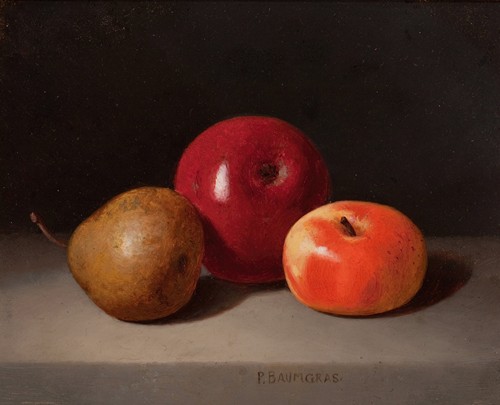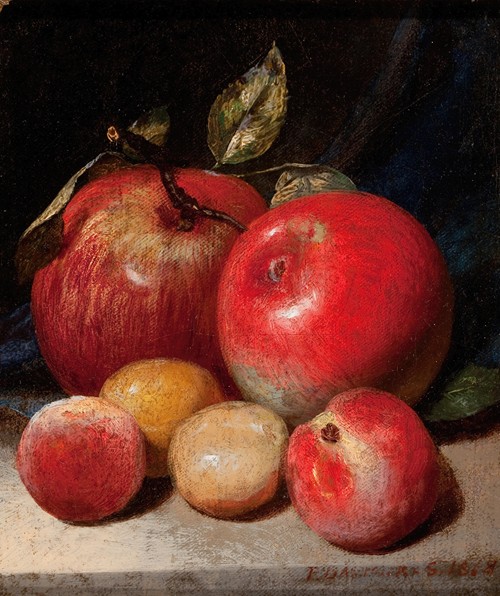

Born in Hamburg, Germany, Baumgras studied at the Düsseldorf Academy and at the Munich Royal Academy with Friedrich Kaulbach (1822-1903) and Carl Schorn (1803-1850). He immigrated to the United States in 1853, settling in the Finger Lakes region of New York State and then moving to Washington, D.C. in 1859 after his marriage to Mary Brainerd Thomson, also an artist. At the start of the Civil War Baumgras enlisted in the Union Army; where he was one of several “surgical draftsman”, who’s heart (and gut) wrenching task it was to depict, in pictorial detail, the nature of battlefield wounds and surgeries. Following the war he became the Assistant Professor of Drawing at the United States Naval Academy in Annapolis, Maryland.
Baumgras was a portraitist, who was also adept at landscapes and still-lifes. Art historian, William Gerdts has said (1998) that Baumgras “is now more distinguished as Washington's finest master of still life”. His skill with still-life painting resulted in his serving as a professor of art at both Columbian College (now George Washington University) and Gallaudet University. Baumgras was not immune to the lure of the American west and in 1869 he traveled to the west coast via ship. Disembarking at the Isthmus of Panama and he would have continued the arduous journey through central America and Mexico to California overland, as the Panama Canal was not completed until much later. He remained in the west until 1875, capturing on canvas the scenic, rugged mountain landscapes of the some of the future national parks. Baumgras also spent part of this time in Portland, Oregon as a portrait painter.
Baumgras returned to Washington, D.C., after his stay in California where he was a founding member of the Washington D.C. Art Club (1877). He moved to Chicago, Illinois in 1877 where he taught drawing at University of Illinois. One of his students, Harriet Persis Hurlbut, opened a studio with Baumgras’s wife Mary in Chicago.

